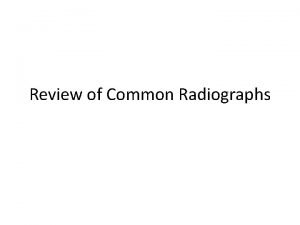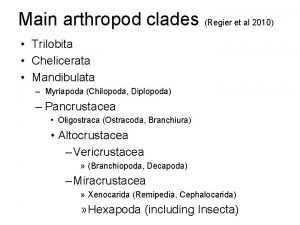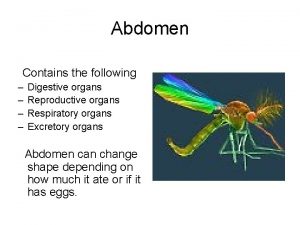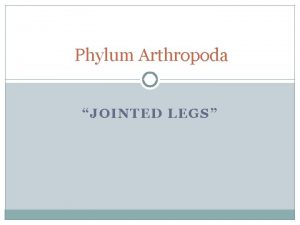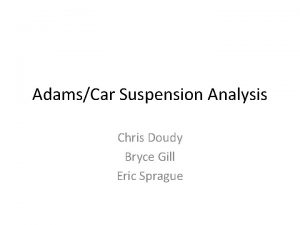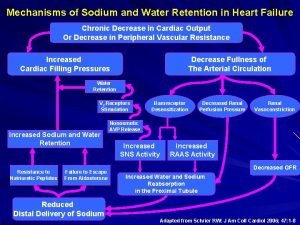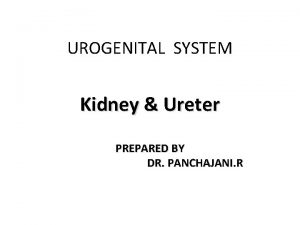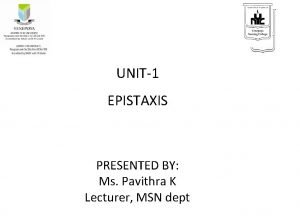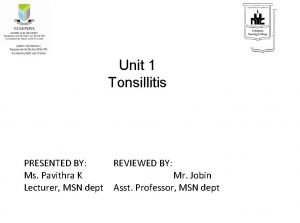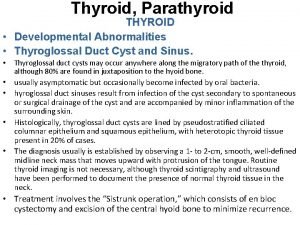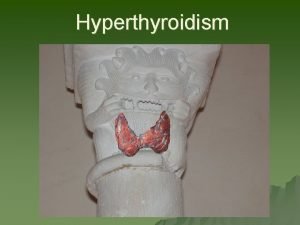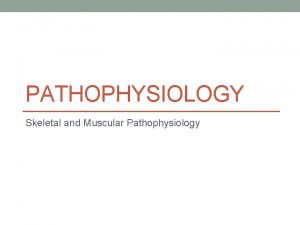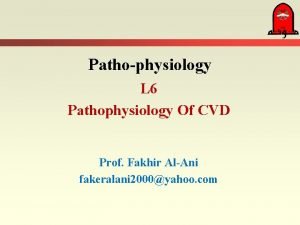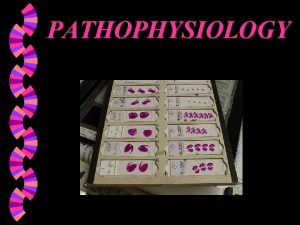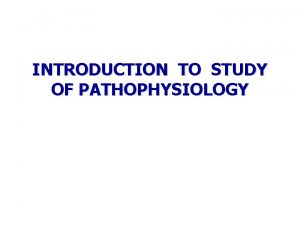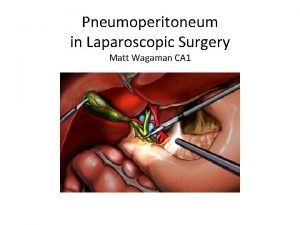I GILLS PNEUMOPERITONEUM ACCESS AND PATHOPHYSIOLOGY OF PNEUMOPERITONEUM























- Slides: 23

I GILLS: PNEUMOPERITONEUM ACCESS AND PATHOPHYSIOLOGY OF PNEUMOPERITONEUM

I GILLS: PNEUMOPERITONEUM PROBLEMS WITH ACCESS § Injuries to Blood vessels and GI trct § 50% occur while inserting the ports § The complication rate has remained the same for the last 20 years

I GILLS: PNEUMOPERITONEUM § Traditionally Veress needle is introduced first § Carbon di oxide is preferred § High diffusion co - efficient § Cleared by body § Non - combustible § Soluble in blood and tissues § Risk of gas embolism lowest when compared with other gases

I GILLS: PREOPERATIVE EVALUATION Evaluate the possibility of adhesions § Prior Operative Reports § H/O Peritonitis § Abdominal Scars Umbilical anatomy § Obesity § Distribution of abdominal adiposity

I GILLS: OR CHECK LIST § Empty gastric contents § Empty bladder ? CBD § Examine the abdomen § Size § Surgical scars § Laxaity of the wall § Umbilical anatomy ? hernia § Presence of mass

I GILLS: VERESS NEEDLE § Spring loaded mechanism § Has an inner Stylet § The Umbilicus § The Palmer's point § Other places

I GILLS: PROBLEMS WITH BLIND TECHNIQUE § Small risk irresepective of experience § More inexperienced surgeons § Adhesions due to previous surgeries § Muscular patient § Surgeons lacking upper arm strength to lift abdominal wall

I GILLS: HASSON TECHNIQUE § Hasson technique was described in 1974 § Mini - Lap to introduce a blunt trocar § Failure of sufficient pneumoperitoneum is the cause for failure of doing the procedure § It is quicker than Veress needle technique

I GILLS: HASSON TROCAR § Initially developed for those with adhesions § Now routinely used § The design had options for fixing the trocar and tighening to prevent air leak § Scandinavian technique involves a small incision and dilating with a conical instrument

I GILLS: INSERTION TECHNIQUE

I GILLS: OTHER TECHNIQUES § Open Fielding Technique: 1992 with everted Umbilicus § MAMC Technique: Vertical incision cutting Umbilical Pillar

I GILLS: THE STANDARD GILLS TECHNIQUE “S” shaped retractors are used to expose and cut the rectus transversely Artery Clamp is used to check if peritoneum is entered. Finger is used to sweep around to make sure that there are no adhesions

I GILLS: GILLS TECHNIQUE Holding in the position shown the ring is passed The finger checks again to see that there are no omentum or intestines between the ring and the abdominal wall The Lift is then fixed

I GILLS: SIDE EFFECTS OF C 02 Due to Hypothermia Due to Hemodynamic effect Due to Metabolic effect Others

I GILLS: HYPOTHERMIA Hypothermia: Gas @ 20 and 0. 3 C decrease per 60 liters Fogging of the lens Desiccation fo the peritoneum Gas Embolism

I GILLS: CARDIOVASCULAR SYSTEM Hypercarbia & increased abdominal pressure contribute to the changes Can cause hypertension, arrhythmias [14 -27%], vasovagal response, decrease on cardiac output, etc. ,

I GILLS: HYPERCARBIA & ACIDOSIS Hemodynamic changes by direct action Changes via sympatho adrenal stimulation Decreased contractility of the myocardium & incresed sensitivity to the arrhythmogenic effects

I GILLS: INCREASED ABDOMINAL PRESSURE Compression effect of increased pressure and increases afterload Activation of vasopressin & renin - angiotensin aldosterone mechanism Decreases femoral artery pressure and increases chances of embolism & DVT

I GILLS: PULMONARY SYSTEM Decreases compliance by 3540% Positive end - expiratory pressure and increased intrathoracic pressure Reduced cardiac output Can cause hypoxemia, barotrauma, pulmonary edema, and atelectasis.

I GILLS: RENAL FUNCTIONS Produces Oliguria due to direct pressure, activation of renin - angiotensin aldosterone system There is increased ADH and reduced cardiac output causing pre - renal acute renal failure that reverses after the surgery. GFR can reduce up to 31%

I GILLS: GASTROINTESTINAL SYSTEM Decrease in splanchnic micro and macro circulation Elevation of Hepatic enzymes Impaired Kuffer cell function Bacterial translocation Decreased perfusion to Gut

I GILLS: OTHERS Subcutaneous emphysema can occur in 0. 3 to 3% Pneumothorax and Pneumomediastinum could be due to congenital defects like foramen of Morgagni or foramen of Bochdalek or damage to falciform ligament Subcutaneous emphysema could extend up too

I GILLS: LOSS OF SPACE The use of suction leads to loss of pneumoperitoneum There is loss of space, movement of tissues and soiling of the telescope all of which make vision difficult. The GILLS has great advantage in this situation as there is no collapse, larger suctions could be used and gauze pieces and mops could be used too
 Causes of obliteration of cardiophrenic angle
Causes of obliteration of cardiophrenic angle Osteichthyes
Osteichthyes Discover magazine
Discover magazine Asymmetrical cerci is present in
Asymmetrical cerci is present in Body parts of housefly
Body parts of housefly Gills precision automotive
Gills precision automotive Pathophysiology of sodium and water retention
Pathophysiology of sodium and water retention Paroxysmal nocturnal dyspnea pathophysiology
Paroxysmal nocturnal dyspnea pathophysiology Terminal access controller access control system
Terminal access controller access control system Terminal access controller access-control system
Terminal access controller access-control system Renal angle
Renal angle Dumping syndrome pathophysiology
Dumping syndrome pathophysiology Pathophysiology of epistaxis
Pathophysiology of epistaxis Electrocauterization
Electrocauterization Hepatic encephalopathy pathophysiology
Hepatic encephalopathy pathophysiology Thyroglossal cyst pathophysiology
Thyroglossal cyst pathophysiology Thyroxine function
Thyroxine function Neonatal sepsis pathophysiology diagram
Neonatal sepsis pathophysiology diagram Digestion
Digestion Acute calculous cholecystitis
Acute calculous cholecystitis Thyroid storm nursing interventions
Thyroid storm nursing interventions Strangulated hernia symptoms
Strangulated hernia symptoms Toxic multinodular goiter
Toxic multinodular goiter Onicholisis
Onicholisis
